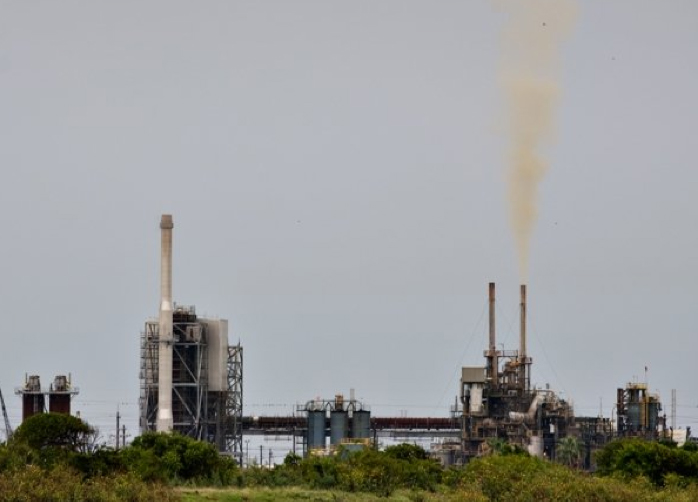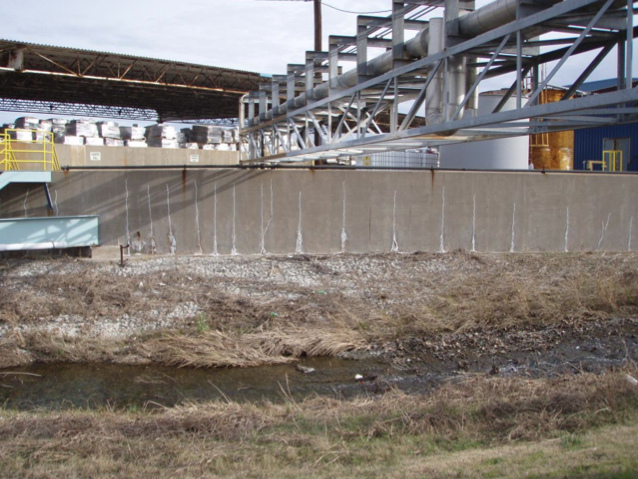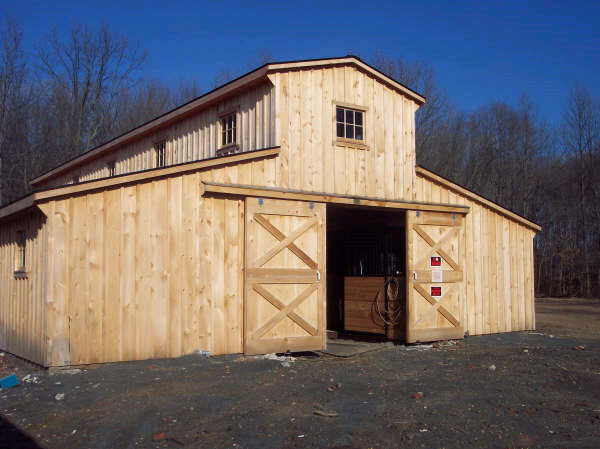TCEQ
The ‘long, sordid history’ of Texas’ most brazen polluter
 …is Gulf Chemical & Metallurgical Corporation, a "recycling" operation in Freeport on the coast where magma-spewing smokestacks are just business as usual. As chronicled by the Texas Observer's Forrest Wilder, it's also a case study on why the Texas Commission on Environmental Quality is an inadequate enforcer of the law. Not for the faint of heart or folks who think the government is already too tough on polluters.
…is Gulf Chemical & Metallurgical Corporation, a "recycling" operation in Freeport on the coast where magma-spewing smokestacks are just business as usual. As chronicled by the Texas Observer's Forrest Wilder, it's also a case study on why the Texas Commission on Environmental Quality is an inadequate enforcer of the law. Not for the faint of heart or folks who think the government is already too tough on polluters.
Smog Update: On the Brink
 Strong winds are usually among the most efficient smog-stoppers DFW has. Despite this last week's record-setting heat wave, ozone levels didn't go crazy like they did in June because the winds kept blowing. Only the Rockwall monitor recorded an "exceedance" of the 1997 85 parts per billion ozone standard on Saturday, it's first of the season.
Strong winds are usually among the most efficient smog-stoppers DFW has. Despite this last week's record-setting heat wave, ozone levels didn't go crazy like they did in June because the winds kept blowing. Only the Rockwall monitor recorded an "exceedance" of the 1997 85 parts per billion ozone standard on Saturday, it's first of the season.
That makes 17 out of 20 DFW monitors that have at least one such exceedance of the 85 ppb standard. 11 of 20 have at least two. 7 out of 20 have at least three. And 2 out of 20 already have the four exceedances they need to be registered as a violation of the standard (a "non-attainment area" ozone monitor gets three strikes before the fourth-highest reading gets counted against it).
That means we're just one bad air day away from seeing five more monitors record their fourth exceedance and become violators. Two bad days away from having nine – and August is traditionally much worse for ozone than July.
In 2010, there were two monitors in violation of the 85 ppb standard. Last year there were seven. Industry and state government have been trying to tell the public DFW is still making air quality progress despite these numbers – that last year was just an anomaly because of the drought. Not sure how they'll spin another year of seven or more monitors out of whack with a 15-year old smog standard
Let's remind everyone again that according to Governor Perry's three TCEQ Commissioners, there were going to be no violations of the 85 ppb standard this year, that this is the second state plan in a row to fail to meet the 85 ppb standard, and that the new EPA smog standard is 75 ppb. Heck of a job TCEQ.
Four Years Later, State Gets Around to Issuing Clean Air Plan for Exide That Won’t Apply
In 2008, the EPA issued a new lead-in-air standard for all U.S. lead smelters.
In 2011, the Texas Commission on Environmental Quality finaly submitted its first proposed plan to meet that new standard in Frisco, Texas, host of the Exide lead smelter. It was rejected as inadequate by EPA on the same day it was submitted.
In May of 2012, the City of Frisco and Exide reached a settlement that commits the company to ceasing the operation of its Frisco smelter on December 31st, 2012.
Last week, the Texas Commission On Environmental Quality released its second plan to meet the 2008 EPA lead-in-air standard at the Exide smelter in Frisco. Its effective date is December 31st, 2014, or two years after Exide will have closed per its agreement with the City of Frisco.
The plan and the accompanying Agreed Order doesn't incude any fines or enforcement measures that address the dozens of violations detailed by TCEQ inspectors at the Exide smelter just last year. Nor does it address the closure and adequate clean-up of the smelter once operations cease.
Between 2008 and the end of this year, Exide will have released an estimated 14,000-16,000 pounds of lead into the air in Frisco.
If you're thinking that this TCEQ planning document is irrelevant, you'd be pretty close to summarizing not only this episode, but decades of state oversight. And yes, this is why it's important to have citizens suing Exide themselves to enforce the law rather than Waiting for Godot TCEQ.
“How your great grandmother’s chemical exposures may affect you”
 In a study published this week, "rats exposed in the womb to five common environmental pollutants passed on DNA-changing attributes that persisted in causing ovarian cancer three generation removed from the original exposure."
In a study published this week, "rats exposed in the womb to five common environmental pollutants passed on DNA-changing attributes that persisted in causing ovarian cancer three generation removed from the original exposure."
It's another example of "epigenetics" – when harmful environmental exposures to one generation can skip a generation or two and show up as health effects decades later.
According to the new study, the five pollutants reprogram how DNA is expressed in the developing fetus' eggs, setting the stage for ovarian disease later in their life.
If you're a Vet, the news is worse. The U.S. Department of Defense helped select the pollutants based on potential exposures in military personnel. They included vinclozolin, a fungicide that's used in the wine industry; a pesticide mixture including permethrin and DEET; a plastic mixture including bisphenol A (BPA) and two widely used phthalates (DEHP and DBP); the industrial byproduct dioxin; and a hydrocarbon mixture called "jet fuel," which is used to control dust on road surfaces.
Researchers at Washington State University exposed pregnant rats to one of five different chemicals alone or in mixtures during a critical time of pregnancy when their daughter pups' eggs were developing. The pups were then mated with males from the same treatment group, and the resulting pups were bred yet again. Only the original generation of pregnant rats had been exposed to the chemicals. The adult daughters and great granddaughters of the dosed animals (called the F1 and F3 generations) were examined for ovarian disease.
In all exposure groups, both the daughter (F1) and great-granddaughter (F3) mice had fewer egg follicles in their ovaries compared to controls, indicating a reduced pool of available eggs. Both generations – but particularly the F3 animals – also had an increased number of ovarian cysts compared to controls.These findings are characteristic of Polycystic Ovarian Syndrome (PCOS) and Premature Ovarian Insufficiency (POI), which are believed to affect 18% of all women.
Other diseases, including allergies and asthma; liver, gastric, prostate and colorectal cancer; and psychiatric disorders are thought to have an epigenetic component. This is the first time that epigenetic changes have been shown in association with ovarian disease. This proof-of-concept study used higher doses of chemicals than what people would typically encounter. Future work is needed to investigate whether lower, more environmentally relevant chemical levels also affect ovarian disease across generations of the rodents.
Locally, we're surrounded by sources of one or more of these pollutants, especially phthalates, BPA, dioxin, and hydrocarbons. BPA is the subject of a lot of media attention and just yesterday, the FDA banned its use in sippy cups for infants. Frisco's Exide lead smelter has been a top ten dioxin polluter in Texas over the last decade. The cement plants in Midlothian are also large industrial sources of dioxin, and new permits to burn more "non-hazardous" wastes that turn into hazardous emissions only ensure that will remain the case. On the ground, internal combustion engines from cars and the natural gas industry facilities in the Barnett Shale soak us in hydrocarbons.
Despite the documentation of the epigenetic effect of certain pollutants in recent years, this impact has not yet been incorporated into any risk assessment of a polluting facility by any environmental or public health agency in the U.S. We may be planting the seeds for epidemics of all kinds in the next 20-50 or more years, and it's all perfectly legal now. Once again, the science is way out in front of the regulations. That's why citizens must arm themselves with the latest research. You won't be getting updates on this stuff from EPA or TCEQ. That's also why it's ridiculous for anyone to speak about the "over-regulation" of polluters in this country. We're nowhere close to understanding what the long term consequences are of our actions in allowing so many chemicals into the environment to mix and match with our own biology. In this larger public health sense, pollution is still very much under-regulated in the United States.
Downwinders and Frisco Unleaded Send Notice: We’ll Enforce the Law if EPA Doesn’t
Our news release says it all:
Citing a lengthy list of unresolved federal violations, citizen groups tired of waiting for EPA to enforce the law at the Exide lead smelter in Frisco are gearing up to do it themselves.
Members of Frisco Unleaded and Downwinders at Risk gathered at 9:30 this morning in front of the Frisco Post Office on Stonebrook Parkway to mail "Notice of Intent" letters to Exide corporate representatives, EPA, and state environmental administrators. The action initiates the official 90-day notice required under federal law before the groups can step into the shoes of regulators and file a "Citizens Suit" to prosecute the smelter for violating the Clean Water Act, Clean Air Act, and the Resource and Conservation Recovery Act.
Although the smelter and the City of Frisco reached a settlement in May that required the 48-year old facility to cease active operations by the end of this year, there have been no fines or clean-up orders issued by either the EPA or the Texas Commission on Environmental Quality despite dozens of violations at the smelter dating back to 2009, including dumping lead waste into Stewart Creek, and burying hazardous waste without a permit.
"There are chronic contamination problems at Exide that still pose a hazard to Frisco residents and property. There's also a long history of law-breaking that the company must be held accountable for," said Colette McCadden, Secretary of Frisco Unleaded, "It's just unfortunate we have to file suit ourselves to make it happen."
In their 17-page Notice Letter the groups state they're acting now "to ensure that past environmental violations are addressed, and contamination at Exide's Plant is adequately and fully remediated to eliminate the substantial and imminent threat to public health and the environment resulting from such contamination," as well as, "to prevent future environmental violations and insure ongoing actions at Exide's Plant, including any clean up efforts, are conducted in such a way so as to prevent further contamination of the surrounding community."
There are 182 pages of attachments supporting the allegations made in the Notice Letter, including reports from both the EPA and TCEQ inspectors citing the smelter for numerous state and federal violations involving water quality, air quality, and handling and disposal of hazardous wastes.
"We're ecstatic that Exide will be closing its smelter," said Frisco Unleaded Co-Chair Meghan Green. "But as part of the settlement that makes that possible, the City of Frisco is leaving the fate of a Superfund-like site in the middle of our town up to Exide, EPA and TCEQ, – the same government agencies that allowed things to get so bad in the first place. Our lawsuit is the only way Frisco residents will have any guarantee that things will be done right this time."
In June, the TCEQ missed a deadline to submit a final clean air plan for the smelter before it closes, along with a chance to issue an enforcement order outlining what steps Exide must take to address long-standing violations uncovered by inspectors.
According to McCadden, "Frisco Unleaded and the Downwinders at Risk Education Fund view this lawsuit as an action of last resort after decades of regulatory failure concerning the Exide lead smelter."Frisco Unleaded is an affiliate of Downwinders at Risk that was founded only last August. Both groups are seen as instrumental in changing Frisco city policy from one of accommodation with the smelter last fall, to eventually pursuing a course of action to close it.Federal statutes require that groups that want to file Citizens Suits must give the targeted polluter and the appropriate agencies 90 days for the option of addressing the complaints outlined in a Notice Letter. That means that the groups can't officially file suit until at least October. Meanwhile, the EPA could act on its own or ignore the Letter."Up to now, the EPA has been alarmingly nonchalant about this outlaw smelter and the public health threat it represents," said Downwinders at Risk Director Jim Schermbeck. "We hope the agency will use our letter as a wake up call and finally enforce the law. We just want them to do their job."
It Didn’t Come From Space: Frisco’s Purple Blobs and the Clean-up of Exide
 Via Frisco Unleaded member Eileen Canavan, comes this blast from the past that has implications for the scheduled clean-up of the Exide lead smelter.
Via Frisco Unleaded member Eileen Canavan, comes this blast from the past that has implications for the scheduled clean-up of the Exide lead smelter.
On August 11th, 1979 the annual Perseid meteor shower was taking place over DFW. The very same night, Sybil Christian found three desk-phone-sized, two-pound purple blobs with the constancy of whipped cream in her front year, located in the "farming town" of Frisco. All three were warm to the touch and contained small chunks of metal. She was convinced they were space rocks.
Ms. Christian sprayed the blobs with a garden hose. One melted into the lawn. The other two were taken by Frisco police to the Heard National Space Museum and eventually to NASA. The further up the scientific food chain the samples went, the more it seemed as if there might be something to Ms. Christian's theory.
But an Assistant Director at the Ft. Worth Museum of Science and History wasn't buying it. He visited Frisco in the daytime and looked around to see what was near Ms. Christian's home. NASA had reported the the metal chunks found in Ms Christian's blobs were lead. So the scientific sleuth looked for possible sources of the metal. He found a large one – the GNB (now Exide) lead smelter about a mile and half away. "In the back" were tons of the same purple blob substance. It was a caustic soda used to clean the impurities out of lead from the millions of used batteries the plant was breaking open and mining for the metal. It was also learned that trucks carrying scrap iron went past the caustic soda dump and the Christian's house EVERY DAY. Case solved, according to the Museum Mythbuster.
But that was 1979, when lead waste falling off the back of a truck, instead of falling from space, in the small farming community of Frisco didn't strike people as being totally whacked.
At the bottom is Stewart Creek, on its way to Lake Lewisville, a source of drinking water for Dallas and other North Texas cities. The white stuff is contamination from the Exide lead smelter which is right behind the wall. This is an EPA inspection photo.
Everything agreed to by the City of Frisco and Exide as part of their historic settlement announced in late May concerns contamination in and around the smelter itself – either the physical structures or the acres of buffer zone the company tried to build around the smelter. Nothing is mentioned in the settlement about off-site contamination that decades of sloppy practices and misguided policy produced – the paving of Frisco city streets with lead. The use of lead as fill or soil additives in Frisco and Collin County. The dumping of lead waste in vacant lots. The routine spillage of lead waste along neighborhood streets.
Although it's a humorous incident, this 1979 story is also deeply disturbing. We'll never be able to fully know the extent of the toxic legacy left by the Frisco smelter because so little in the first two to three decades of operation was reported or noted. A spill here, a dumping ground there. Who will remember, or even be alive, some 30 years later to tell us what happened?
But that shouldn't be a license by the authorities or Exide to ignore tracking down the leads we do have and trying to minimize the surprises down the road. At this point there's no effort being made by EPA, the state of Texas, or the City of Frisco to chronicle the memories of old-timers and do archival searches to provide a better map of total contamination risks.
Moreover, with the Exide settlement, the City of Frisco has waived its right to have any say in how the worst part of the smelter is cleaned-up. It has agreed to not challenge any plans the Texas Commission on Environmental Quality will come up with for final disposition of the plant site, including just leaving everything in place and pouring some cement over it. Remember please that we got to this point in large part due to TCEQ not doing its job. Now the same people who created the problem are in charge of fixing it. Somehow, we don't think they have the local population's best interest at heart.
Who will be making sure the Exide clean-up is done well and right on behalf of the residents of Frisco?
Proposed Corpus Pet Coke Plant Too Dirty for New Power Plant Rules
 A $3 billion proposed power plant that would sit on Corpus Christi's bay and emit over 13 million tons of Greenhouse pollution a year may never be built because it can't meet new EPA power plant emissions rules. That's the headline of this Monday Fuel Fix article by the Houston Chronicle's Matthew Tresaugue.
A $3 billion proposed power plant that would sit on Corpus Christi's bay and emit over 13 million tons of Greenhouse pollution a year may never be built because it can't meet new EPA power plant emissions rules. That's the headline of this Monday Fuel Fix article by the Houston Chronicle's Matthew Tresaugue.
Chase Power was planning on opening the the Las Brisas (the Breezes) power plant in 2013, but that may never happen unless the company or the state of Texas is successful in lawsuits against the Agency's New Source Performance Standards.
Those standards don't apply to older plants, but they do apply to power plants under construction or planned, like Las Brisas. They require all power plants to achieve greenhouse emission limits that are difficult to meet without CO2 sequestration or other carbon-eating technology.
Las Brisias is designed to burn Petroleum Coke, a refinery by-product that is particularly nasty and releases as much carbon as coal. If it ever is built, it would instantly become the fourth largest CO2 polluter in the state.
Instead of trying to adapt or find a technology that could greatly reduce its carbon footprint, Chase Power is joining Texas in suing the EPA, while also petitioning to get an exemption from the Agency that would allow it to disregard the new greenhouse gas rules. Their local Congressman, Rep. Pete Olsen, is more than happy to oblige them.
As Gas Mining Moves East, So Do Smog Violations
Failing the Test on Smog
 This is a response to statements in this.
This is a response to statements in this.
1) "The downward trend" that Mr Clawson of TCEQ says has only been "interrupted," is, in fact continuing, and he knows this because it's TCEQ monitoring that's proving it. This last March saw the highest ozone levels ever recorded for that month since TCEQ air quality monitoring began in 1997. It's only June, and there are already two monitors whose three-year runing average "Design Value" is above the old 85 ppb standard. The "best ever" ozone summer we were supposed to experience this year, according to TCEQ's prediction to EPA submitted in December, is completely off the rails.
2) The "87 ppb" Design Value Mr. Clawson cites is from 2010. Last year it was 92 ppb – at the Keller monitor. This year so far, the Keller monitor is already at a Design Value of 87, a violation of the old standard and something TCEQ said would not happen.
3) The NCTCOG claim that,"the DFW region has a tougher time than other metropolitan areas in the U.S. because of its climate plus its position downwind from outside sources of pollution" is also misleading. Houston is a hotspot for bad air, and yet last year DFW exceeded the number of bad air days and the severity of the violations in that city. Other metropolitan ares downwind of power plants as well as DFW, and yet they've all managed to do better in achieving cleaner air. Atlanta, Phoenix, and other Sunbelt cities that started out at the same smoggy spot a decade ago have all conquered the old 85 ppb std. DFW has not. It's already blown it again this year. Instead of blaming climate or coal plants, it is more realistic to blame DFW's air quality failure on a lack of political will by local and state officials to get serious about decreasing air pollution.
However, there is one large area of policy where the excuses of lack of will and new downwind sources collide – in the official lack of attention paid to the rise of Barnett and Haynesville Shale gas pollution as a source of smog in DFW.
4) The statement that only "5 percent" of the smog-forming emissions in DFW come from oil and gas drilling and production is also highly misleading. First, we know this is one of the fastest-growing categories of air pollution over the last decade. The increase in gas pollution is erasing decreases in emissions from other sources. Second, according to the information submitted by TCEQ to EPA last December, oil and gas emissions are the second largest source (20%) of smog-forming Volatile Organic Compounds, or VOCs in the 9-county DFW non-attainment area. That's more than the total VOCs produced by all on-road vehicles in the same 9 county area. Based on recent field studies by NOAA and others, this is probably an underestimate.
This statement also ignores the impact of gas emissions to the south and east of DFW, like Freestone County's, that are not included in the 9-county area inventory, but are probably influencing air pollution here.
What's always left out of this pie chart is the fact that cars now have a removal efficiency of approximately 90%. No other major sources come close to that kind of effort, despite technology being available to achieve it – at cement kilns, gas operations. and coal plants. That's where "the lowest hanging fruit" remains. But since all those industries are large contributors to the politicians directing the status quo, there's no political will to target them. Exhibit A: the 2011 DFW clean air plan submitted by the state, which relies primarily on marketplace forces to replace old cars with new ones, instead of any new round of pollution controls for any industry sources.
5) The NCTCOG claim that "monitors in the north Dallas and Frisco areas have had the highest readings of the region but the plume seems to be shifting west" is also based on old data. In fact, the opposite is occurring. Violating monitors are moving EAST (just like gas mining). And there are more of them. From 2008 to 2010, Eagle Mountain Lake and Keller were the epicenter of smog in DFW. But in 2011, while Keller tripped the std, EML did not. Moreover, during that same 08-10 period there were only 1-3 monitors in violation of that std. Last year, there were seven. And they included not just Keller and Parker County, but Denton, Grapevine, Pilot Point, Frisco and North Dallas – directly in contradiction to the NCTCOG claim.
This year, the very first monitor to record four "exceedances" of the 85ppb std was located near Mockingbird and I-35 in Central Dallas – the first time that monitor has done so since 2005. Moreover, the fourth exceedance came in June – the earliest that has happened since 2006, when 12 out of 19 monitors were in violation at the end of the summer.
As much as the officials and agencies would like us all to ignore the summer of 2011 and think of it as an aberation, it would be more prudent to see it as another warning sign that DFW needs to do much more to get safe and legal air.
June Smog Attack: Day 3
 High ozone levels continued to take their toll on people and monitors Wednesday. Grapevine joined the Hinton Street Dallas monitor in recording its fourth "exccedence" of the old 1997 85 ppb smog standard and so establishing an official violaiton of it.
High ozone levels continued to take their toll on people and monitors Wednesday. Grapevine joined the Hinton Street Dallas monitor in recording its fourth "exccedence" of the old 1997 85 ppb smog standard and so establishing an official violaiton of it.
This is an 8-hour standard wherein the average over eight hourly readings must be 85 or above, So we're not talking about short-term spikes. These are day-long spikes.
Monitors in Keller, Eagle Mountain Lake, Arlington, North Dallas and the Redbird area of southwest Dallas saw their third exccedence of the 85 ppb standard, meaning one more day of bad smog could also make them environmental crime scenes. Midlothian, Northwest Ft. Worth, and Frisco all have two exceedences as of yesterday,
We're going to wait until there's a pause in the bad news to look at how off the mark the all powerful and holy TCEQ computer model is so far, but suffice to say that after this week, there's not likely to be any monitor inside the nine-county area that will even be close.



